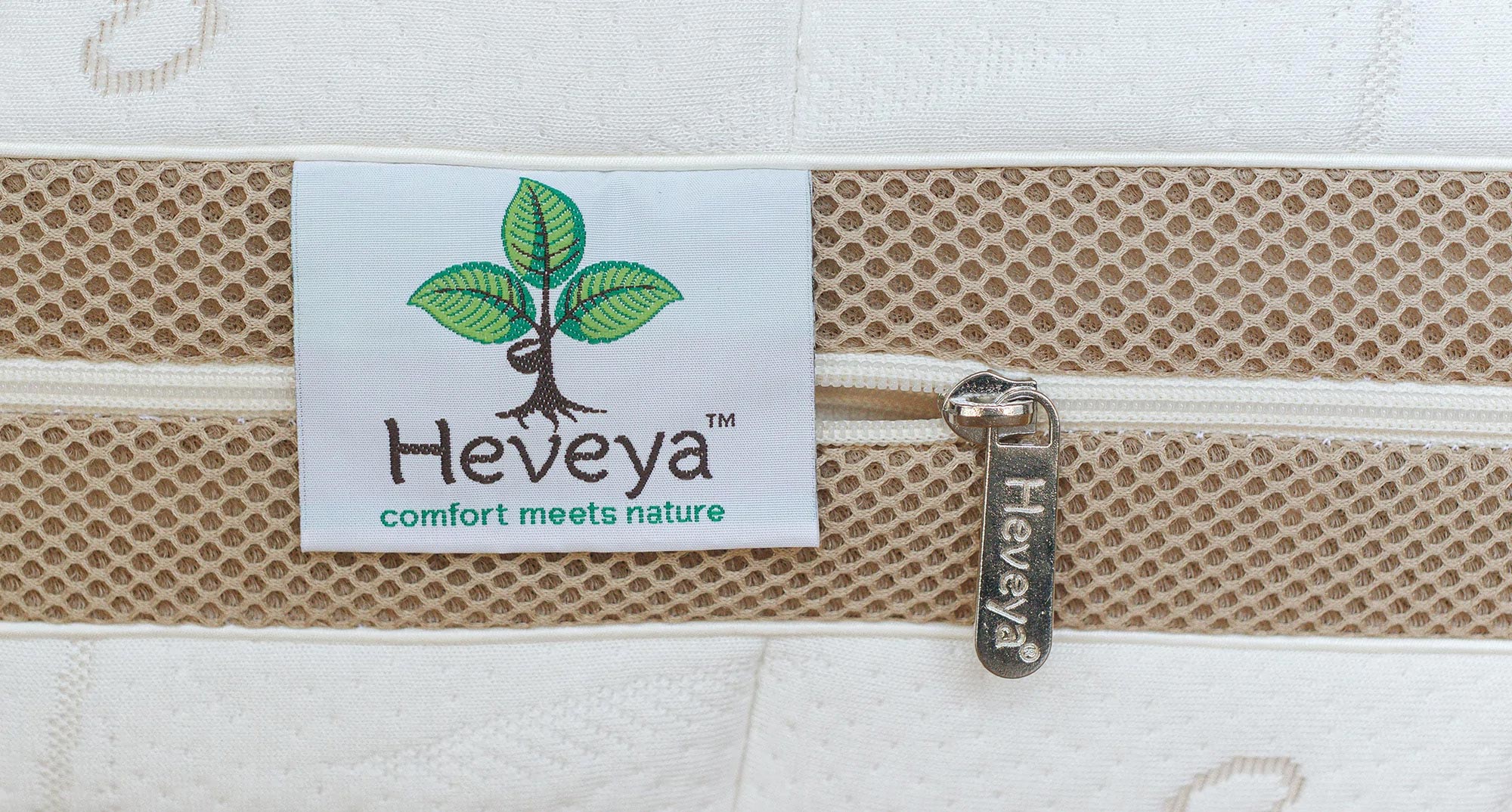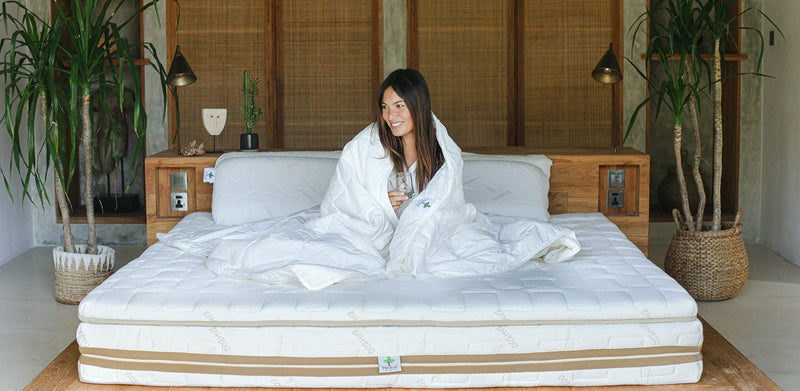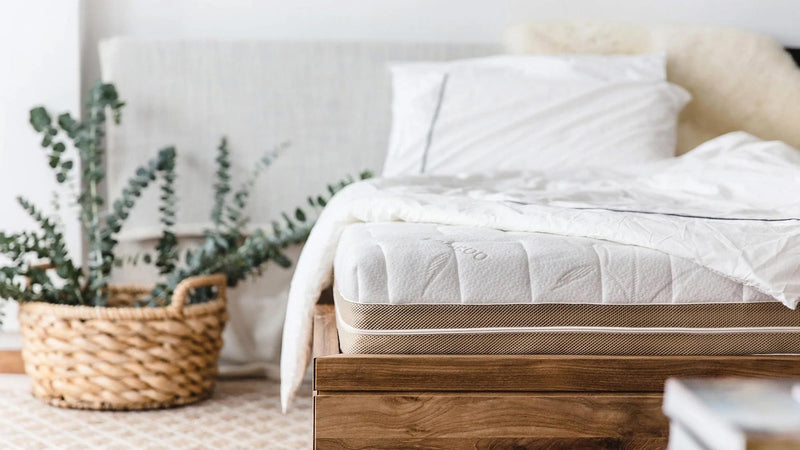Dust mites multiply easily in bedding and mattresses. These can trigger year-round allergies with unpleasant symptoms. Even if you are not actually allergic to dust mites, it's a good idea to periodically take these steps to remove them for the sake of hygiene.
What is a dust mite?
A dust mite is a tiny eight-legged creature which is virtually impossible to see with the naked eye. Dust mites feed on flakes of shed human skin and are therefore prevalent wherever humans live. Dust mites will live in even the cleanest of homes, making them difficult to remove.
In particular, dust mites can be commonly found in bedding, since there are typically a lot of dead flakes of human skin there. Dust mites also thrive in places with high humidity. Mattresses and bedding fulfil these requirements because shed skin and perspiration provide an ideal source of food and humidity.

Why are dust mites a problem?
Dust mites pose a problem because they excrete enzymes in their faeces, and people can have an allergic reaction to these enzymes. This can cause symptoms such as sneezing, wheezing, coughing, or watery eyes.
Dust mites do not pose problems to those who are not allergic to them, as dust mites do not bite or burrow into skin. However, if you are hygiene conscious you will find it a good idea to periodically take measures to remove dust mites.
Ways to remove dust mites from a mattress
No matter which way you plan to remove dust mites from your mattress, you will simultaneously need to remove dust mites from your sheets and your pillowcases. This can be done by washing these at high temperatures. Pillows themselves should be wrapped in a sealed plastic bag and placed in the freezer for at least 48 hours to kill the dust mites.
Here are a few different methods of removing dust mites from your mattress:

- Lower the humidity in your bedroom since dust mites require relatively high levels of humidity to survive (around 80% humidity). By running a dehumidifier and reducing the humidity to about 35%, you will make the conditions unfavourable for dust mites to survive. However, there are three big drawbacks to this method. Firstly, when you sleep on your mattress at night, perspiration will increase the amount of humidity on your bedding, which could make the conditions favourable again for dust mites to propagate. Secondly, a very low humidity such as 35% can be quite uncomfortable for some people. Thirdly, it costs a lot of money in electrical costs to run a humidifier constantly. Furthermore, this method won't remove any of the faecal matter of the dust mites from your mattress, and that is what causes allergies. In short, this method is only useful when combined with other methods that physically remove dust mites and their by-products.
- Baking soda and vacuuming. This can work for a mattress with a fabric surface, for example a spring coil mattress; do not try this directly on a latex or memory foam core. Mix one cup of baking soda with a few drops of essential oil of your choice. Then simply sprinkle baking soda on the mattress and let it sit for 15 minutes. Then vacuum it all off using the hose attachment to suck up all the baking soda fully. . This will suck up the dust mites along with the baking soda. It's best to use a vacuum cleaner that has a HEPA filter, as this will be effective in picking up and containing the dust mites - ordinary vacuums will just spread the dust mites around further.
- Call a professional. A professional specializing in mattress cleaning may be able to help with this. However, this should not be the first resort. The reason for this, besides expense, is that the professional may employ chemical methods of removing dust mites. If you have allergies, these chemicals may cause you further irritation. If possible, opt for non-chemical methods of dust mite removal such as steam cleaning or ultraviolet light, as these will not cause irritation. However, such methods are only effective in the short term and dust mites may come back after a month or so. Note that steam cleaning and ultraviolet light are only suitable for fabric-topped mattresses and not for a latex core.
No matter which of the above methods you employ, it is important to remember that dust mites can be picked up from anywhere else in the home and wind up on an otherwise clean mattress and multiply. So even if you clean your mattress and sheets regularly, you'll need to be just as vigilant to vacuum your carpets frequently to decrease dust mites there too. Note that wood, tile or linoleum floors are less friendly to dust mites than carpet is, especially as they can be regularly mopped.

A better option: use a dust-mite resistant mattress
A much more effective option is to simply purchase a mattress which is resistant to dust mites. A latex mattress is the only mattress which is naturally resistant to dust mites. Latex, which is made from the sap of the rubber tree, is naturally resistant to dust mites as it is an inhospitable environment for them to thrive in.
A latex mattress is a far better option than periodic cleaning and re-cleaning of your mattress when dust mites multiply. A dust mite resistant mattress can offer year-round relief and hygiene to those with dust mite allergies.
Also, you'll be doing yourself a favour in more ways than allergy relief and hygiene when you purchase a latex mattress. A latex mattress lets you sleep in the utmost luxury and comfort.
Pop by the Heveya® showroom to try out today!
Don't forget about your pillow
If you're thinking about purchasing a latex mattress, you may wish to consider a latex pillow at the same time. Your head - the part of you breathing in all the dust mite enzymes - will be resting on a pillow for around eight hours each night. Wouldn't you want your pillow to be resistant to dust mites too? A latex pillow is the ideal choice for this, and it also offers you ultimate comfort on which to rest your head.
Always use a removable mattress cover
Even on a latex mattress, you should always use a removable mattress cover. Although latex is naturally dust mite resistant, it is still best to use a cleanable cover in case of spills, perspiration, and so on. At Heveya®, all our latex mattresses come with a removable cover. The cover can simply be removed completely whenever you wish to clean it, and then put back on. This cover gives you an extra layer of protection around your mattress to keep it in tip-top condition.
Not only can latex bedding help to mitigate the unpleasant symptoms of dust mite allergies, your body will also will be thankful for the top-of-the-line comfort and luxury that a latex mattress delivers.












